Dyspatch offers block localization to make it easier to build and localize emails, ensuring consistency across emails.
Localize a Block to translate content to different countries, regions, or languages. Localizations are available with Teams+, Enterprise, and Custom accounts and can be managed in the email builder or via the Dyspatch API.
Getting Started
To get started, head to the blocks & apps page in your account and select the block you'd like to add localizations to.
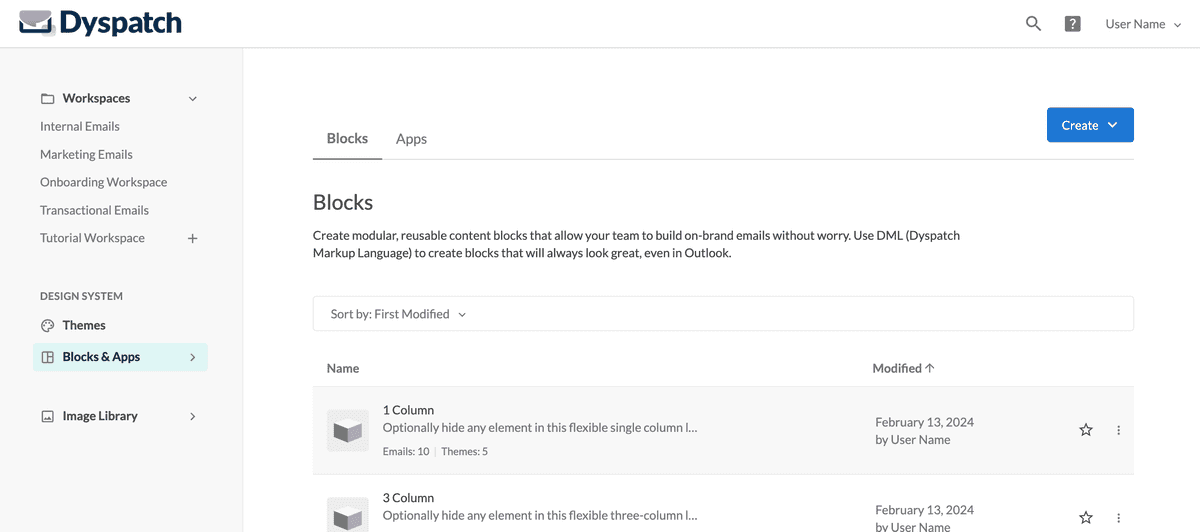
Mark Content for Translation
In order to make content from your block localizable at the block level, add the localizable attribute along with a
unique identifier name to content you wish to translate. After this step you will be able to translate the content in
your block.
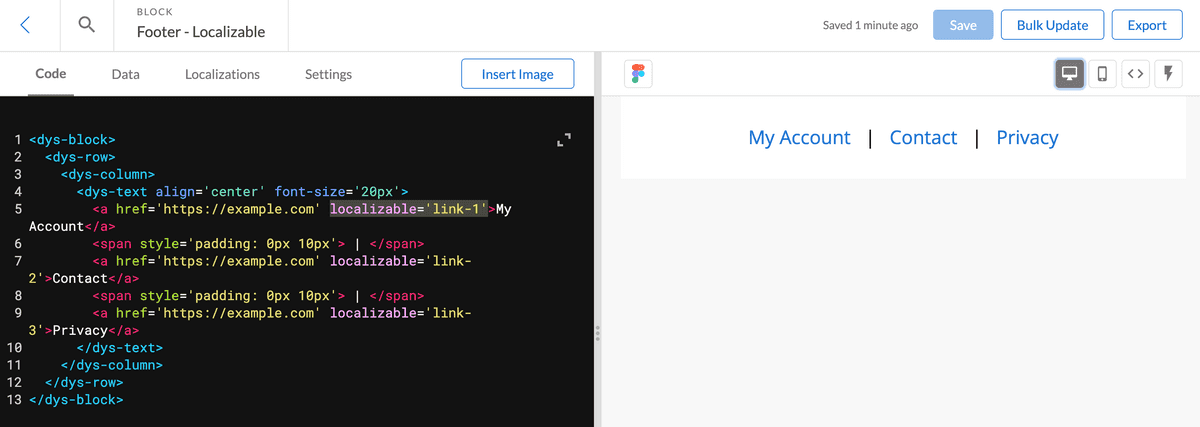
<a href="https://example.com" localizable="link-1">My Account</a>Creating Localizations
The next step is to navigate to the Localizations tab, where you can create a localization and give it a name your team will recognize. This name is for your reference only and can follow any naming convention that works for your team.
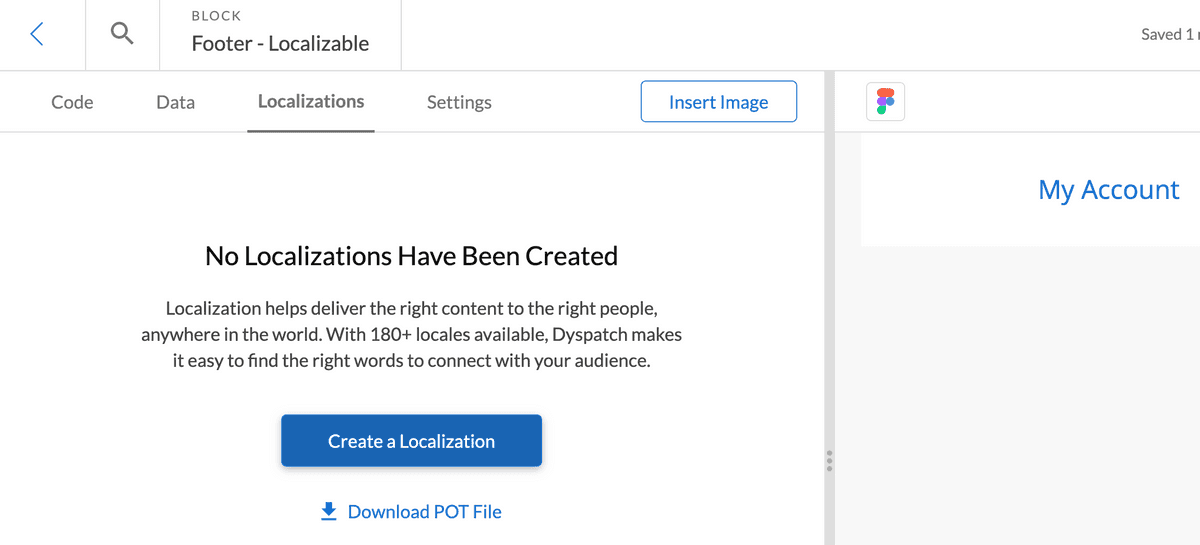
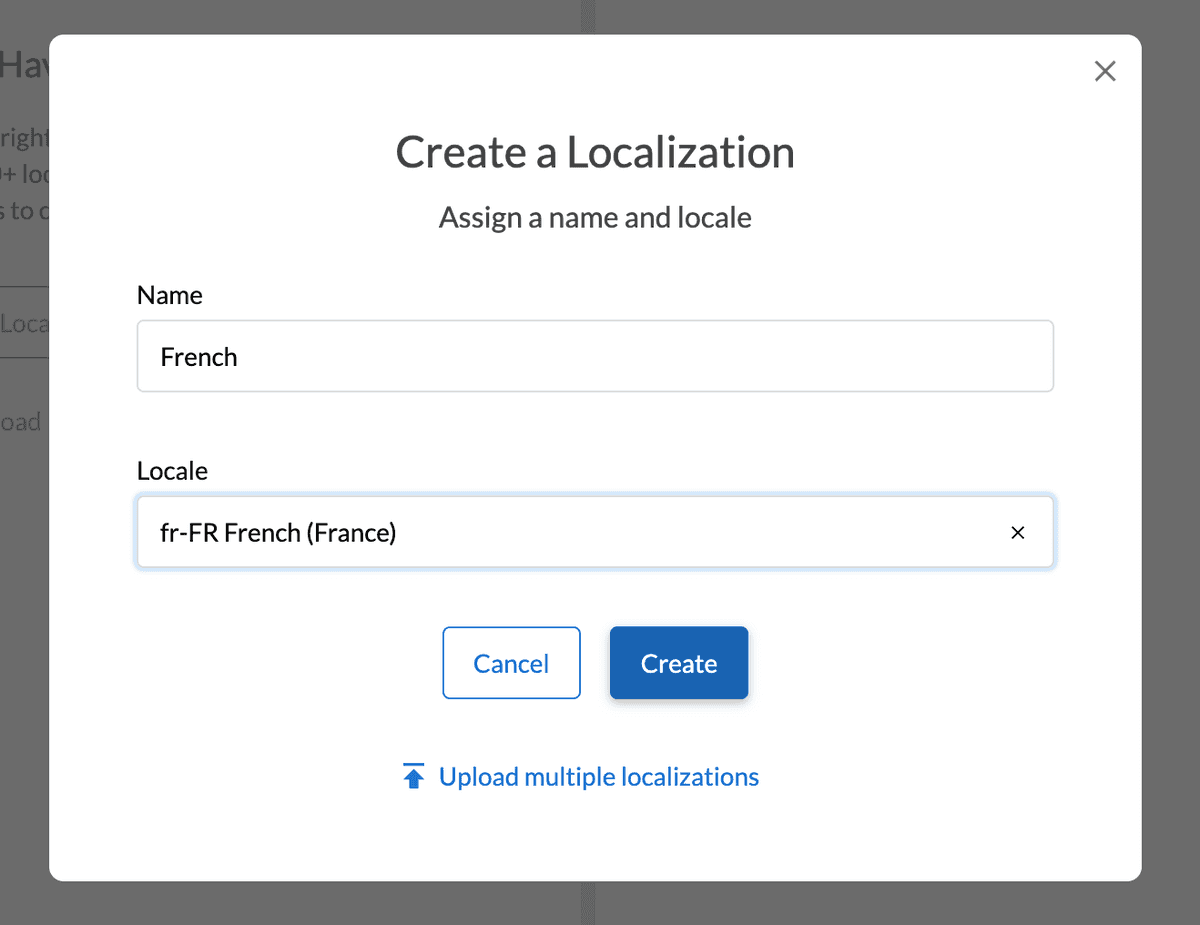
Translating Your Content
Add Translations Manually
Selecting your locale from the localizations tab in the block editor will give you a list of translation strings. By clicking a string you will be given a text field where you can add your translation for that content.

Add Translations via PO/POT Files
Use a POT file to manually manage translations outside of Dyspatch. Download the POT file from the 3-dot menu next to the locale's name. Once you receive the PO files back from your translation service, upload them from the same menu.
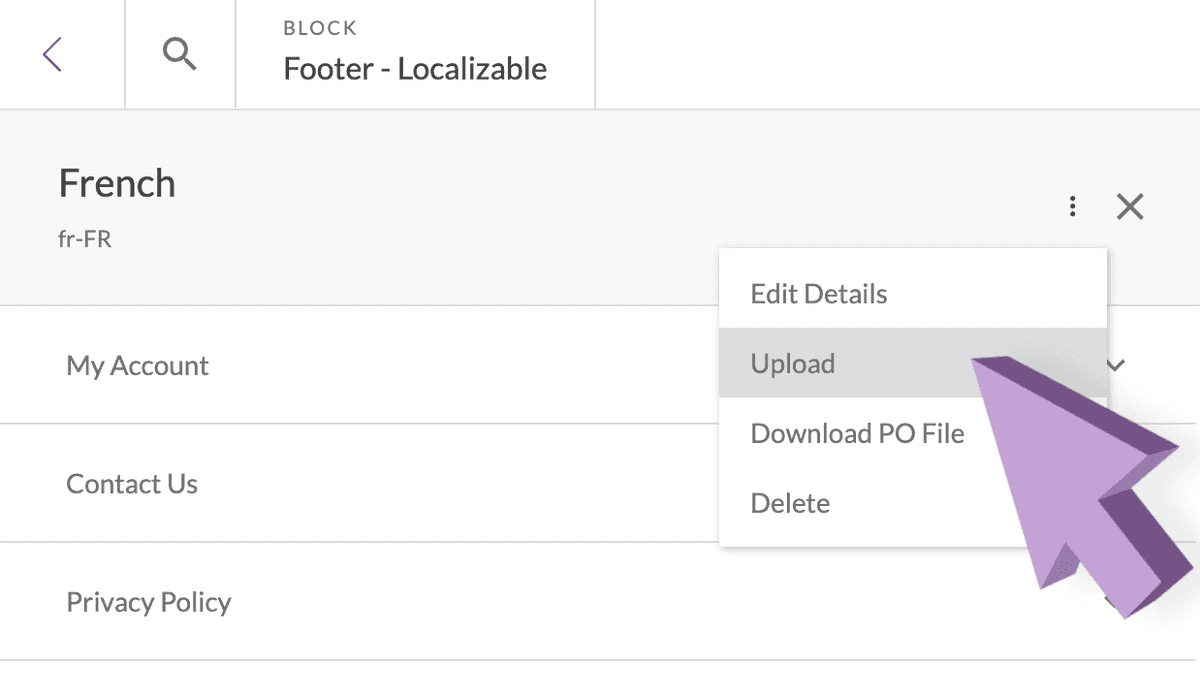
More info on the manual translation process available in our Localization using POT and PO files doc.
Translate with Phrase Strings
Sync your block localizations with your Phrase Strings project the same way you would editable email content with the Phrase Strings integration.
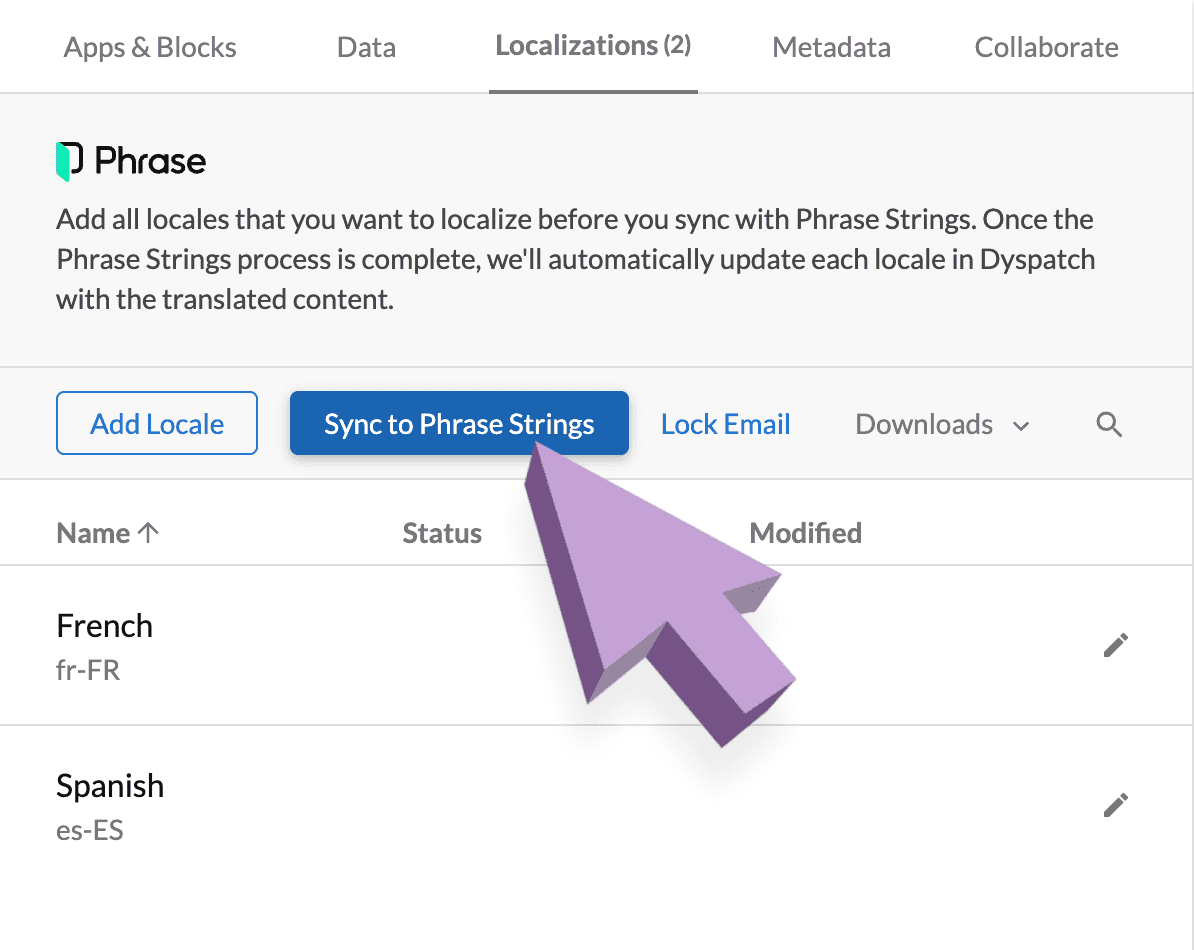
Translate with Phrase TMS
Sync your block localizations with your Phrase TMS project the same way you would editable email content with the Phrase TMS integration.
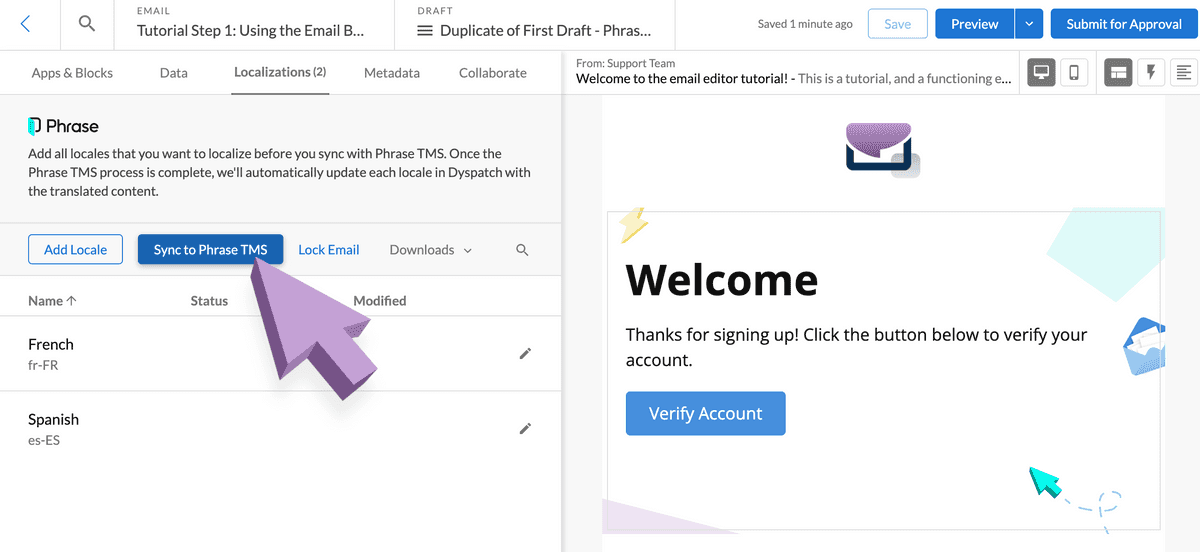
Translate with Smartling
Sync your block localizations with your Smartling project the same way you would editable email content with the Smartling integration.

Preview a Localization
Preview in the Block Editor
Select the locale you'd like to preview from the localizations list.

Preview Localizations on Devices
Once the block is included in an email, the localizations you’ve created are available for device previewsDevice PreviewsView how your email looks when opened in different devices and email clients. and test sending in the Preview area. Select a localization from the drop-down to preview the localized version of your email on selected devices.
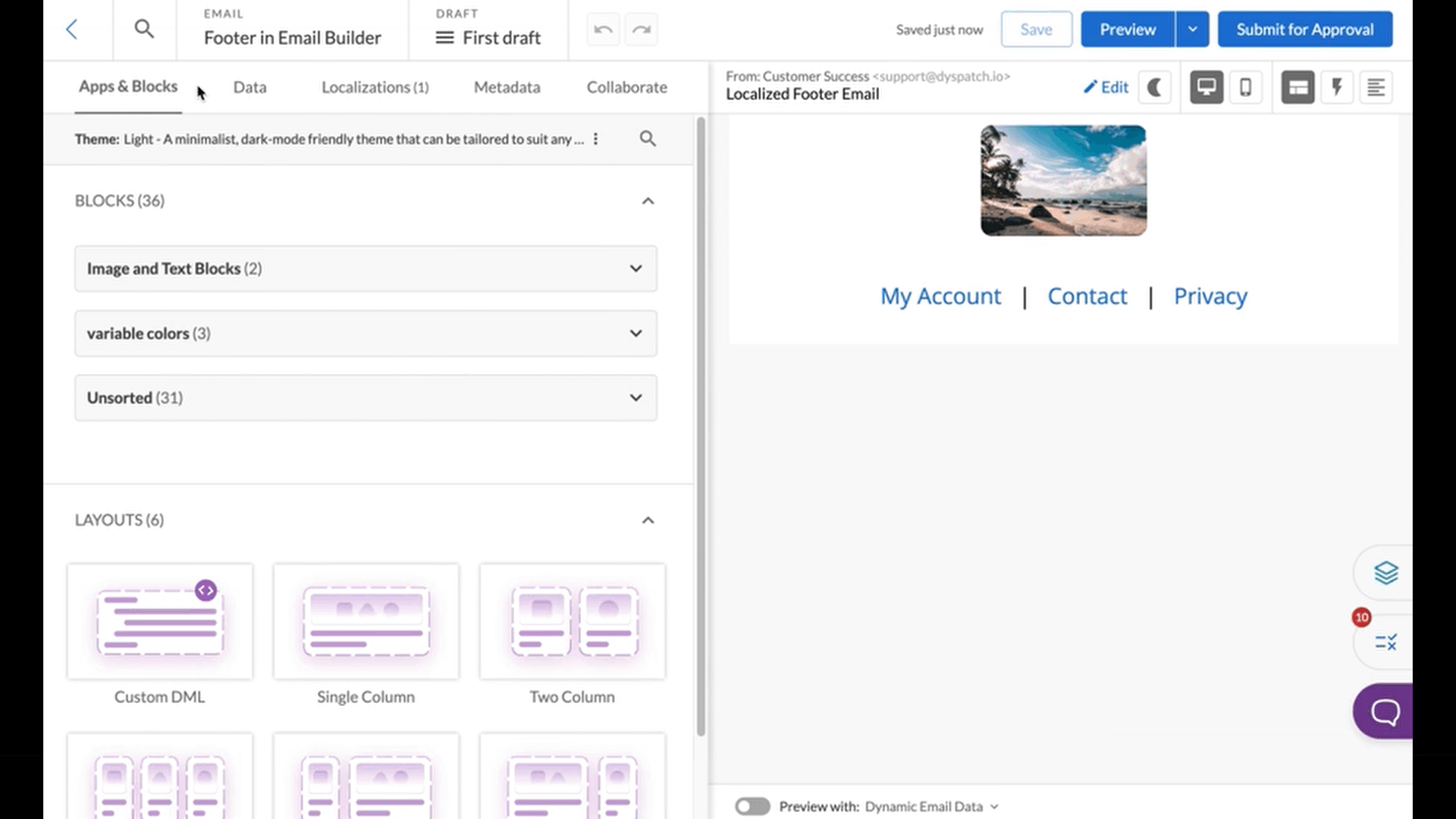
Enable Block in Themes
If you're not seeing your block in the Email Builder, it may not be assigned to the theme that your emails use.
Each theme that the block will be used in must be enabled by selecting the Settings > Theme Assignment tab and toggle on all themes that the block will be used in.

Export Localizations
Once you're happy with your translated content and have published your email, all locales will export to your integrated ESP or be included in your export files. See the full list of integration options here.